Risk of hunger pandemic as coronavirus set to almost double acute hunger by end of 2020
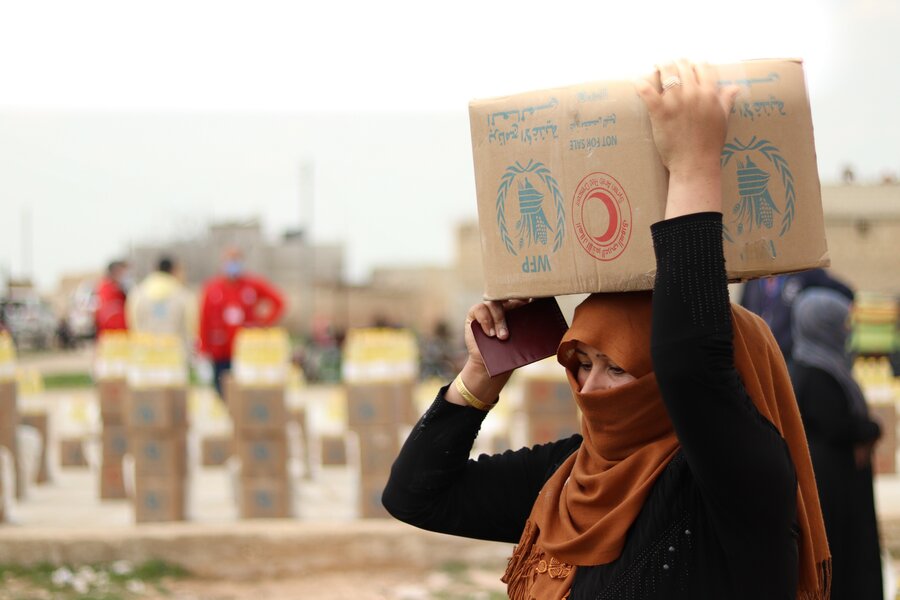
The coronavirus pandemic will see more than a quarter of a billion people suffering acute hunger by the end of the year, according to new figures from the World Food Programme (WFP).
Latest numbers indicate the lives and livelihoods of 265 million people in low and middle-income countries will be under severe threat unless swift action is taken to tackle the pandemic, up from a current 135 million.
That is nearly double the number in the newly published Global Report on Food Crises 2020, which estimates that 135 million people in 55 countries currently face acute hunger as a result chiefly of conflict, the effects of climate change, and economic crises. That report was drawn up prior to the emergence of COVID-19 as a pandemic, and the contrasting figures provide a startling insight into the devastating potential of this virus.
Concern is highest for those in countries across Africa as well as the Middle East, as the virus threatens lives and livelihoods along with the trading networks they rely on for survival.
‘These new numbers show the scale of the catastrophe we are facing.'
"These new projections show the scale of the catastrophe we are facing," warned WFP chief economist Arif Husain. "We must make sure that tens of millions of people already on the verge of starvation do not succumb to this virus or to its economic consequences in terms of loss of jobs and incomes.
"Just like in developed nations, governments are doing all they can to assist their people. We need to do the same for tens of millions of people."
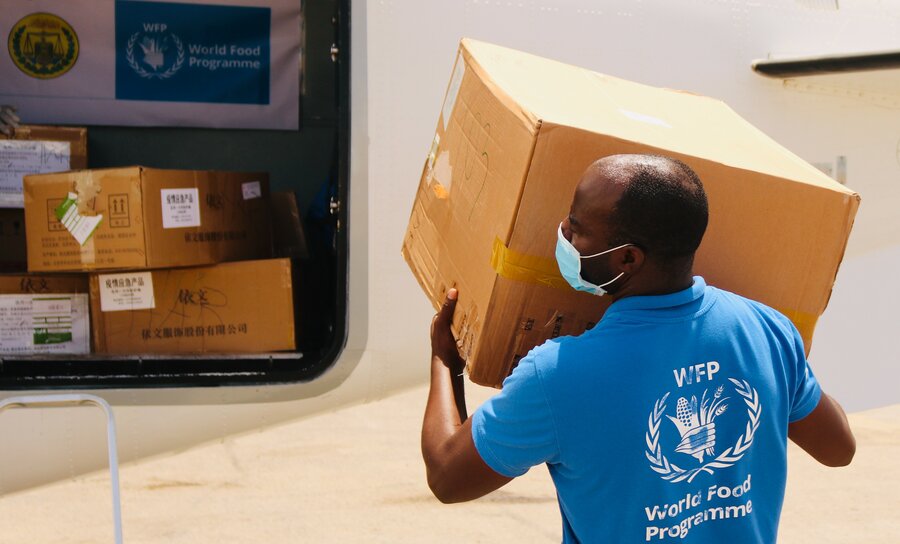
The greatest worry is for people living in conflict zones and those forced from their homes and into refugee camps, with countries of concern including northeastern Nigeria, South Sudan, Syria and Yemen.
"These are the people I'm most worried about," said Husain. "They did not need COVID-19. Even without it their lives were hanging by a thread. They literally depend on us for their lives. If we cannot get to them for any reason they end up paying the ultimate price. We need to prioritize the people and make sure we're there. Because if it's not us, it's no one else."
‘They did not need COVID-19. Even without it their lives were hanging by a thread.'
Poor nutrition and resulting weak immunity leaves children especially vulnerable, while crowded camps can be fertile ground for a rampant contagion such as COVID-19.
The effects on trade flows that provide a lifeline to millions of people could be equally devastating. Sub-Saharan African countries such as Somalia and South Sudan imported more than 40 million tons of cereals from around the world in 2018 to plug gaps in local food production. This leaves them extremely vulnerable to risks such as price swings during a global crisis. At the same time, countries including Angola and Nigeria will suffer as their fuel exports are hit hard.
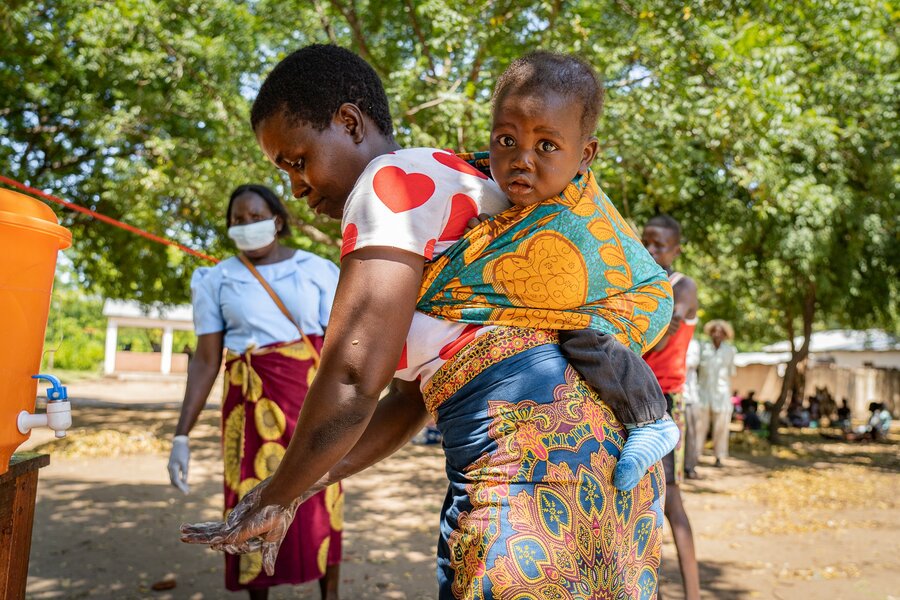
"It's critical that commercial trade continues to flow regardless of anything else taking place around it," warns Husain. "Because if that stops, the humanitarian work cannot happen. Quite simply, millions of people's lives depend on the flow of trade, and the impact of disruption on people's food security is hugely concerning."
Trade barriers like export bans are extremely counterproductive and often backfire: "Hoarding food supplies or putting up trade barriers does not work. Starving your neighbour is not good policy. We have seen this many times in the food and fuel crisis in 2008 and in the financial crisis of 2009. Again in the food crises of 2010 and 2012. It's better to facilitate trade and let it flow across the world."
Countries with large public debt will struggle to mobilize the resources to respond to the crisis, while others — most strikingly Zimbabwe — will have problems replenishing low currency reserves. In the Middle East, Yemen, Iran, Iraq, Lebanon and Syria all face severe economic problems.
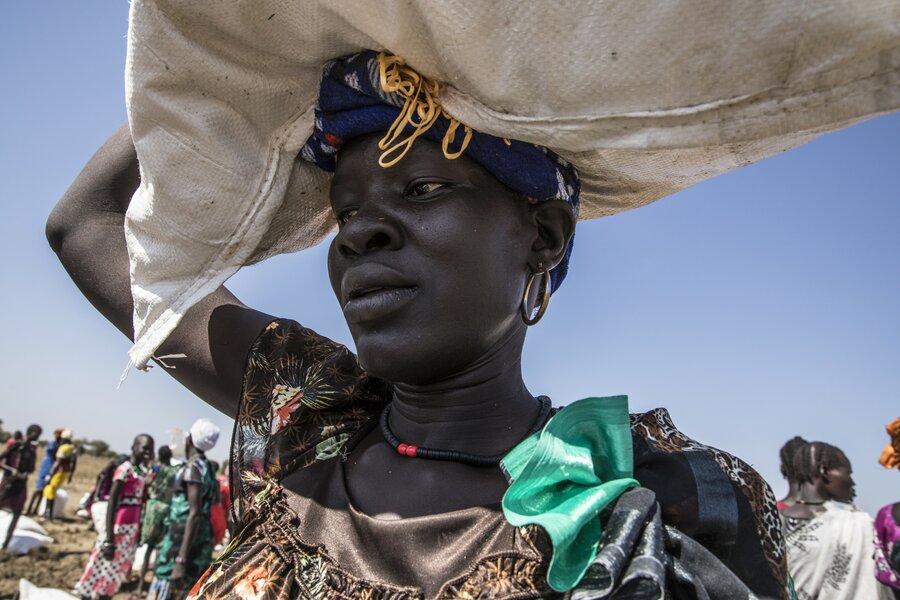
"The scenario in poor countries is too gruesome to comprehend," says Husain. "We need to get ready for the second and the third wave of this disease. People are losing their livelihoods and their incomes and, at the same time, supply chains are disrupted. This translates into a double whammy which has both the breadth and the depth of hunger increasing around the world."
Husain describes the potential impact on food-insecure people in urban areas as hugely concerning, with the urban middle class, daily wage earners and those who work in the informal and service sectors suddenly becoming vulnerable to poverty and hunger.
‘People are losing their livelihoods and their incomes, and supply chains are disrupted. This translates into a double whammy'
"In urban areas, people are dependent on markets for buying food and hence more vulnerable to price fluctuations and potential availability problems," he explains. "A sudden and sharp decrease in their purchasing power, particularly in poor countries that do not have the enough fiscal space to launch widescale safety net programmes, is especially troubling therefore."
Additionally, urban slums will be particularly exposed in the case of an outbreak, due to cramped and unsanitary conditions.
WFP is taking various steps to reduce the impact of COVID-19 on reaching and supporting the world's most vulnerable people.
This includes expanding its real-time, remote food-security monitoring in several countries, to assess how supply chains are functioning and monitor households' access to health care. Information is available to the wider humanitarian community, while the public can access information via WFP's Hunger Map LIVE and Hunger Analytics Hub.
WFP is assessing where cash transfers can be distributed electronically in areas where food is readily available, and already works with governments on an ongoing basis to strengthen social protection systems which are likely to feature cash as a default response during the pandemic.
Other measures include pre-positioning food closest to those most in need — while supply chains are still working — providing double rations to reduce the number of distributions, providing take-home rations to replace school meals, and launching health-education campaigns.
WFP has established international and regional staging areas, built out of its global network of Humanitarian Response Depots.
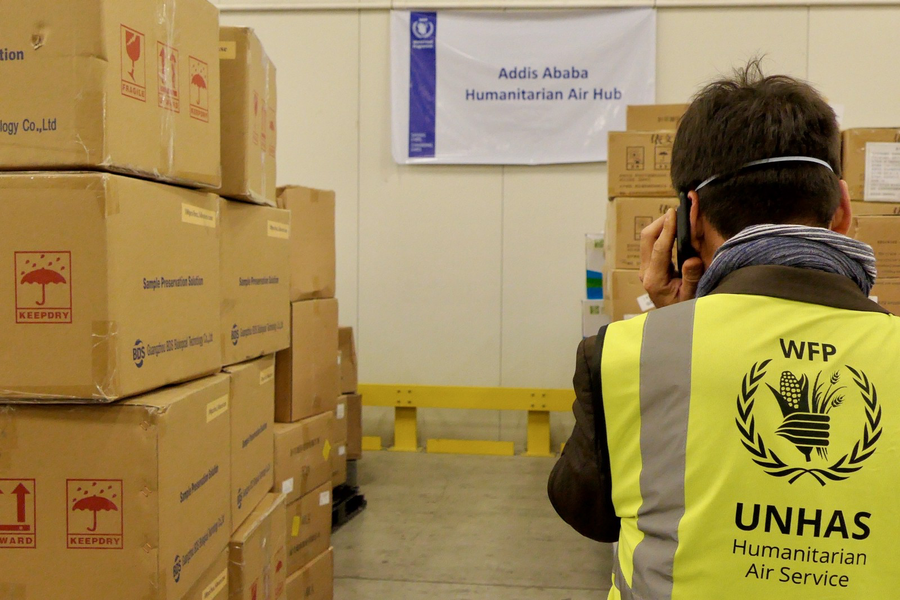
WFP has set up the Addis Ababa Humanitarian Air Hub, with support from the Government of Ethiopia, to transport protective equipment, medical supplies and humanitarian workers across Africa for the COVID-19 response. It will also ensure medical evacuations for humanitarian responders. UN ‘solidarity flights' have already begun, with WFP transporting vital medical cargo to all countries across the continent on behalf of the wider humanitarian community.
Supplies delivered include one million face masks as well as personal protective equipment — enough to protect health workers treating more than 30,000 patients across the continent — and laboratory supplies to support surveillance and detection.
‘We've got to be there for these people, because if we're not, nobody else is.'
"WFP is placed well, because of its on-the-ground presence, to help vulnerable people around the world with nutrition-based activities, with school meals-type activities, with cash, so that people can buy their food and generate economic growth in local communities and access food when there are shortages," says Husain. "This is why it's so important to do what we do best. We've got to be there for these people, because if we're not, nobody else is."
WFP has asked for US$350 million as part of an appeal under the Global Humanitarian Response Plan to COVID-19, in order to provide common services including working with humanitarian and other partners to bring health facilities such as ventilators and protective equipment into countries.
Its wider plan of work for 2020 will cost at least US$12 billion, a figure that could easily rise depending on the impact of the pandemic on hungry people. A total US$1.9 billion of this money is needed now, in order to pre-position food closer to people in most need and while supply chains are still working. "The more we wait, the more disruption there is to supply chains, the more expensive it would be both economically and in lost lives," added Husain.
Additional reporting: Jon Dumont
